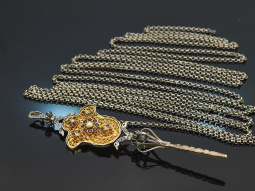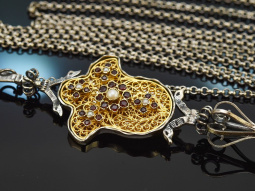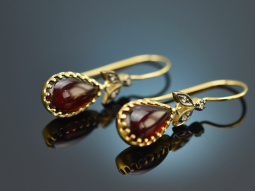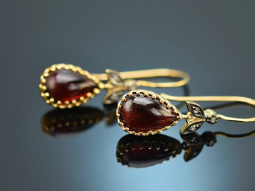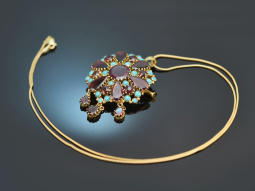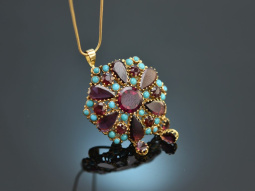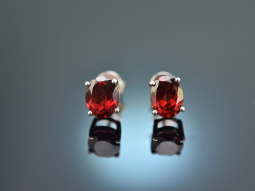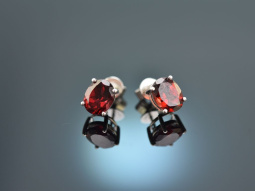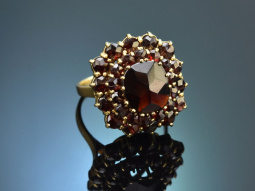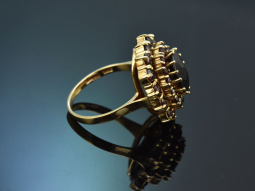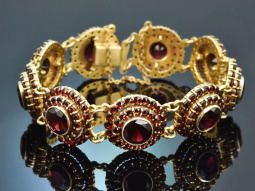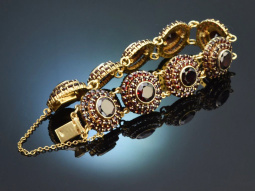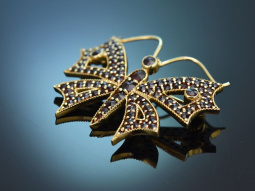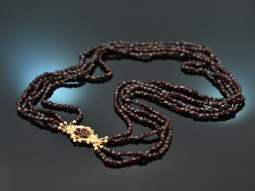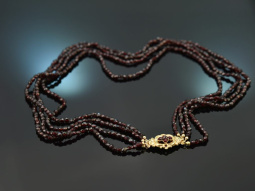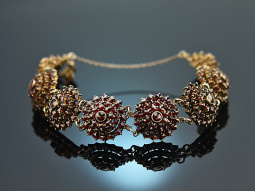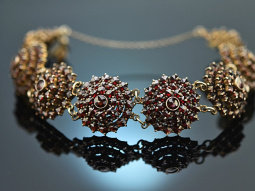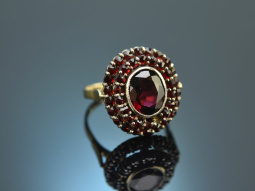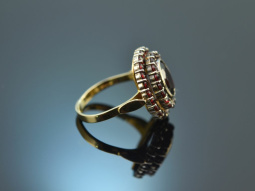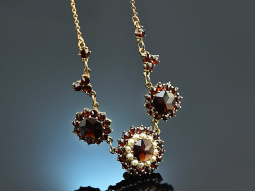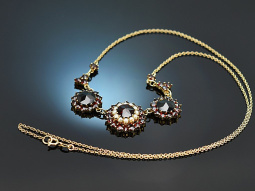Garnet
For centuries, garnets have captivated admirers with their fiery sparkle and deep red colour. The gemstone was particularly popular in Bohemian garnet jewellery in the 19th century and, thanks to its many varieties, remains a classic in jewellery design to this day. Whether simple or opulent, authentic historical garnet jewellery offers a wonderful opportunity to revive the charm of bygone eras. Find out more »
Garnet – the name says it all
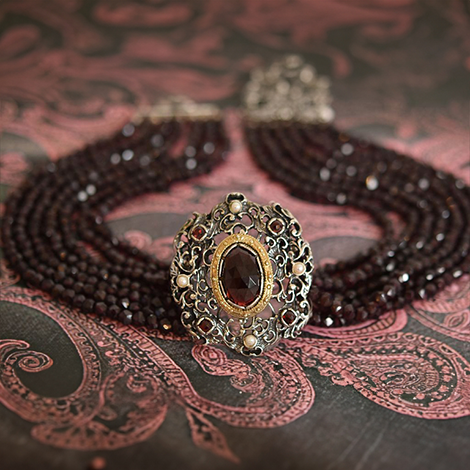
Already referred to as carbuncle (Latin: carbunculus = small glowing coal) by the Roman scholar Pliny the Elder in his writings, the term garnet was first defined in literature in the 13th century. The grain-shaped crystals of the gemstone, which also resemble the seeds of a pomegranate, led to the name granatus (Latin granum = grain).
The red gemstone is particularly attractive for jewellery making, both today and in the past, due to its hardness, high refraction and numerous colour variations ranging from red and pink to brown and bright green.
A gemstone with a long tradition
Garnets have been known as gemstones since Roman times and enjoyed their first heyday in the early Middle Ages, when men and women adorned themselves with garnet-set fibulas (clasp pins to hold garments together). Archaeological excavations show that garnets were not only used to decorate jewellery. Everyday objects and weapons were also adorned with the red gemstone.
Bohemian garnet – a success story
The carbuncle stone enjoyed a revival in the 16th and 17th centuries, when the term ‘Bohemian garnet’ was officially coined and the mining of the mineral in what is now the Czech Republic was systematically expanded. Bohemian garnet or pyrope is characterised by its purity and intense dark red colour.
In the 18th century, Bohemian garnet became a sought-after gemstone throughout Europe. It experienced its heyday in the 19th century, particularly in the form of mourning jewellery and traditional costume jewellery. Depending on how it was processed, much of this jewellery was worn by the middle classes and was not reserved for the upper classes. It was often combined with silver, brass alloys such as tombac or low-grade gold alloys, which was characteristic of the jewellery of that period.
When the mineral deposits were exhausted, the heyday of garnet also came to a temporary end.
Authentic antique jewellery at Halsbandaffaire
A characteristic feature of antique garnet jewellery is the use of tiny Bohemian garnets, which are set close together in the respective pieces of jewellery (pavé setting). Necklaces and bracelets are characterised by rosette motifs and garland-like pendants, among other things. Garnet pendants and brooches can be found in the form of crescent moons and stars or in round or oval designs with a strongly curved and accentuated centre. The gemstone itself is usually rose-cut or cabochon-cut.
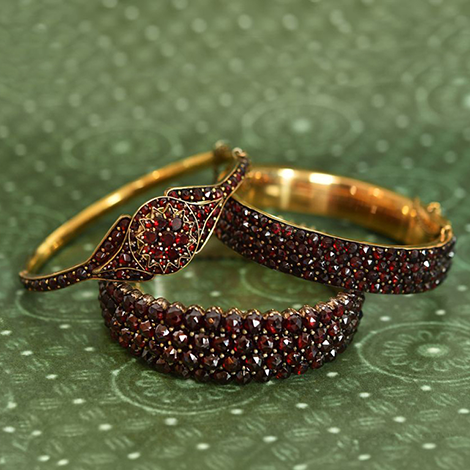
Our range includes a carefully curated selection of genuine Bohemian garnet jewellery from the 19th century, which you can buy in our shop or from the comfort of your own home via our online shop.
Garnet – a must-have for traditional costumes
In addition to historical jewellery from the 19th century, authentic traditional costume jewellery also provides a wonderful stage for this red gem, as its intense colour makes it the perfect accompaniment to almost any dirndl. Whether subtle in the form of small garnet earrings or opulent as a multi-row choker, Halsbandaffaire offers you high-quality jewellery, especially from the mid-20th century, as a harmonious addition to your traditional costume.
Our tip: Bring your dirndl with you when you come to try on jewellery in our shop in Munich! That way, you can make sure your jewellery and outfit are perfectly coordinated!
